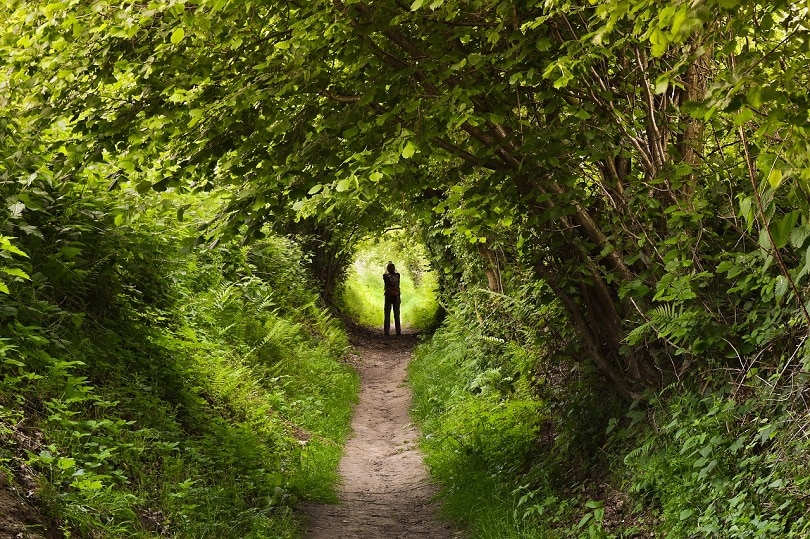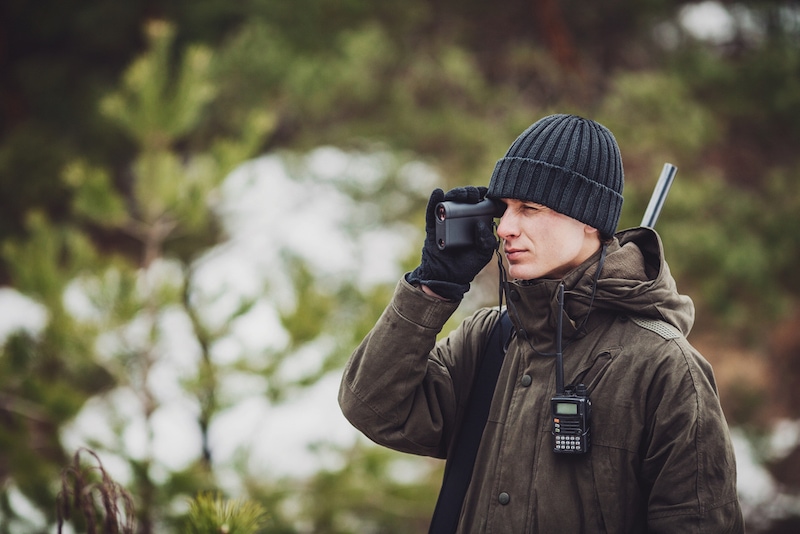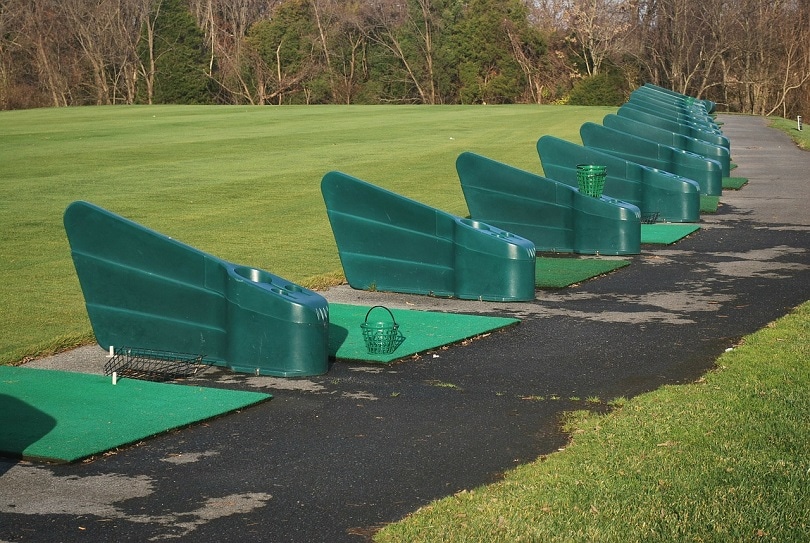How to Judge Distance Without a Rangefinder: 6 Helpful Methods
Last Updated on

Many sports and disciplines require you to accurately gauge distances. Golf, for instance, necessitates that you precisely hit a ball towards a specific target. If you don’t know how far you have to hit the ball, you can’t gauge how much power to put on your swing. Hunting is another time you’ll need to accurately gauge your distance in order to know where to aim in order to hit your target.
Most people rely on rangefinders to measure these distances. But what happens when you have to rely on your own skills instead? Are you confident in your ability to accurately gauge your distance from various objects? If not, the six methods we cover in this article should help you build your skills and confidence so you can always make the shot, with or without a rangefinder in tow.
Why Learn This Skill?
In many situations, you can bring a rangefinder along with you, making it simple to tell how far you are from your target. But you won’t always be able to rely on your technology. What if your rangefinder malfunctions at a critical moment? It could be something as simple as forgetting to put your rangefinder back in your bag so it’s just not there when you need to call on it.

Consider that there might be times when you aren’t able to use your rangefinder. Maybe it’s illegal in the event you’re participating in. Rangefinders aren’t always legal during all hunting seasons. Furthermore, rangefinders are not allowed in many golf tournaments, particularly professional-level competitions. Perhaps you just want to improve your own skills and become more self-reliant and less dependent on technology.
Regardless, you’ll need a method to fall back on so you can still gauge your distances with some accuracy. If you’re dependent on your rangefinder to range distances, then you’ll be out of luck when you can’t use it. But if you have another method of gauging ranges in your back pocket, then you’ll never find yourself in such a situation.
6 Methods to Judge Distance Without a Rangefinder
1. Count Your Steps

One easy method of measuring distance is simply walking it and counting your steps. There are two ways to do this.
First, you can take steps by placing the heel of your front foot against the toes of your back foot and count each step as one foot. The total number of steps you take will approximately equal the distance in feet. So, if you take 100 steps in this manner, then your distance is about 100 feet.
The other way to count your steps is to assume your full stride as a yard, which is about average for most people. Then you can walk the distance you’re trying to measure using full strides. The number of steps you take will approximately equal the distance you covered in yards. So, if you took 30 full strides, you’re looking at a distance of about 30 yards. You can multiply this by three to get the distance in feet, which would be about 90 feet in this example.
Of course, this method will only give you an approximate measurement. You can’t be totally precise when counting your steps since your stride might not be exactly a yard and your foot is probably not a perfect 12 inches long. Still, you will get a close enough measurement for most purposes.
The other drawback to this method is that it requires you to walk the distance you’re hoping to measure. Not only is this time consuming, but it may not be practical or possible in all circumstances.
2. Walk Your Eyes

One of the best ways to gauge distances when you don’t have a rangefinder is to walk the distance with your eyes in 10-foot or 10-yard intervals. Even with no practice, you might be able to get a decently accurate measurement this way. If you practice a bit and become skilled with walking your eyes, you might be able to get very close with your eye measurements and no longer have the need for a rangefinder.
3. Practice Against Your Rangefinder

Just because you can’t use a rangefinder in a certain situation doesn’t mean you can’t use one for practice. One of the best ways to get better at ranging with your eyes is to consistently range objects and get a feel for different distances.
What’s great about this method is that you can easily practice anywhere and it only takes a few seconds. Whenever you’re out, simply pick a few objects and guess their distance. Then, check the true distance with your rangefinder, comparing your guess and the real measurement. The more you repeat this process, the better you’ll get at accurately gauging different distances with your eyes.
Make sure you practice on many different objects at distances varying from pretty close to very far. You can take your rangefinder with you just about anywhere and practice for a few seconds at a time. Those few seconds will add up over days, weeks, and months. Before you know it, you’ll be able to gauge all sorts of different distances with just your eyes. You might never be as precise as a rangefinder, but you can get pretty close with enough practice.
There’s an obvious downside to this method though, which is that you must have a rangefinder to practice with. These tools can be a bit pricey, and you might be trying to gauge distances without a rangefinder because of the related expense. If that’s your position, don’t worry, we still have several other methods to mention.
4. Hit the Driving Range

This one is especially useful for golf players but can benefit anyone who wants to get better at ranging with your eyes. At driving ranges, the distances are marked, so you can get a good feel for how far different distances are. If you’re a golfer, you can get used to the feeling of shooting at different ranges, which can greatly enhance your game when playing without a rangefinder.
5. Walk or Shoot a 3D Target Range

Essentially, this method is for hunters what the driving range method is to golfers. 3D archery ranges are set up with various targets set at specific distances. Each station has the distance marked, allowing you to see exactly how far each distance is. This is incredibly useful for bowhunters who will get a chance to practice shooting from each range on a realistic target.
6. Set Up Distance Markers
This method is only useful if you’re going to be in the same area repeatedly, such as when you’re hunting the same spot over the years. You can either use landmarks to designate specific distances or you can lay out distance markers for yourself such as rocks or sticks. You’ll have to measure the distance ahead by walking it, but once your markers or landmarks are setup, you’ll always know your distances from your shooting point.
In Conclusion
Ranging without a rangefinder is a skill that takes practice and patience to develop. There are several ways to judge the distance, but you’ll either have to put in the time to learn the skill or time to set things up. Practice will help you gain accuracy when gauging distances, so find the way of practicing that best compliments your needs.
Featured image credit: MichaelGaida, Pixabay
About the Author Dean Eby
An avid outdoorsman, Dean spends much of his time adventuring through the diverse terrain of the southwest United States with his closest companion, his dog, Gohan. He gains experience on a full-time journey of exploration. For Dean, few passions lie closer to his heart than learning. An apt researcher and reader, he loves to investigate interesting topics such as history, economics, relationships, pets, politics, and more.
Related Articles:
How to Clean a Refractor Telescope: Step-by-Step Guide
How to Clean a Telescope Eyepiece: Step-by-Step Guide
How to Clean a Rifle Scope: 8 Expert Tips
Monocular vs Telescope: Differences Explained (With Pictures)
What Is a Monocular Used For? 8 Common Functions
How to Clean a Telescope Mirror: 8 Expert Tips
Brightfield vs Phase Contrast Microscopy: The Differences Explained
SkyCamHD Drone Review: Pros, Cons, FAQ, & Verdict
